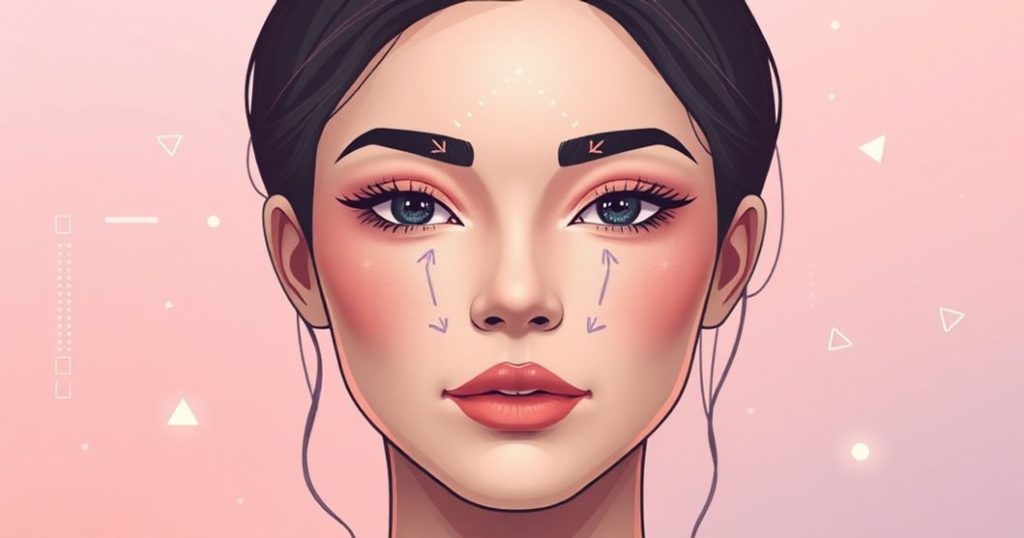Troubleshooting AI-Generated Facial Expression Inaccuracies
AI image generation has undergone a remarkable transformation over the past few years, evolving from producing barely recognizable abstract shapes to creating photorealistic masterpieces that rival professional photography. Modern AI models like DALL-E 3, Midjourney v6, and Stable Diffusion XL leverage billions of image-text pairs to understand nuanced prompts and generate images with stunning accuracy and artistic flair. What once required hours of manual work in Photoshop or expensive stock photo subscriptions can now be accomplished in seconds with a well-crafted text prompt.
This democratization of visual content creation has opened doors for small businesses, content creators, and hobbyists who previously couldn’t afford professional design services. The technology continues to advance at a breathtaking pace, with new models emerging every few months that push the boundaries of what’s possible, making tools like Icebox AI’s free platform increasingly valuable for creators at all skill levels. However, with the power of AI image generation comes the challenge of troubleshooting inaccuracies, particularly when it comes to facial expressions.
In this comprehensive guide, you’ll discover everything you need to know about troubleshooting AI-generated facial expression inaccuracies, from understanding how these revolutionary tools work to mastering advanced techniques that separate amateur results from professional-quality output. We’ll explore practical strategies for crafting effective prompts, avoiding common pitfalls that lead to disappointing results, and leveraging AI image generation to solve real-world creative challenges. Whether you’re a content creator looking to enhance your blog posts, a marketer seeking eye-catching social media visuals, or simply someone who wants to bring their imagination to life, you’ll find actionable insights and proven techniques that you can implement immediately.
By the end of this article, you’ll understand not just the ‘how’ but the ‘why’ behind successful AI image generation, empowering you to create compelling visuals that resonate with your audience and achieve your creative goals. We’ll cut through the hype and marketing speak to deliver genuine, experience-based insights that come from extensive hands-on testing with multiple AI image generation platforms. Let’s dive into the fascinating world of AI-powered creativity and unlock your visual storytelling potential.
Understanding How AI Image Generators Process Your Prompts
When you type a prompt into an AI image generator, you’re initiating a complex computational process that would have seemed like science fiction just a decade ago. Behind the scenes, sophisticated neural networks trained on billions of image-text pairs analyze your words, break them down into semantic components, and map them onto learned visual concepts that the model has internalized during training. This process happens through what’s called ‘latent space navigation,’ where the AI doesn’t simply retrieve stored images but actually synthesizes entirely new visual content by blending and recombining learned features in ways that match your description.
The quality of your output depends heavily on how well you communicate your vision through text, which is why prompt engineering has emerged as a critical skill for anyone serious about AI image generation. Unlike traditional search engines where keywords are king, AI image generators respond better to descriptive, contextual language that paints a complete picture. For instance, rather than simply typing ‘cat,’ a prompt like ‘a fluffy Persian cat with bright blue eyes sitting on a Victorian-style velvet cushion, soft natural lighting, professional photography’ provides the AI with rich contextual information that leads to far more compelling results.
Common Pitfalls in AI-Generated Facial Expressions
Despite the advancements in AI image generation, facial expressions remain one of the most challenging aspects to get right. Common pitfalls include inaccurate emotion depiction, mismatched expressions with the context, and lack of subtlety in expression nuances. These issues can stem from a variety of factors, including poorly crafted prompts, limitations in the AI model’s training data, and the inherent complexity of human facial expressions.
To overcome these challenges, it’s essential to understand the importance of detailed prompting. By providing the AI with as much contextual information as possible, you can significantly improve the accuracy of the generated facial expressions. This includes specifying the type of emotion, the intensity of the emotion, and any relevant background or environmental factors that could influence the expression.
Advanced Techniques for Troubleshooting AI-Generated Facial Expressions
For those looking to push the boundaries of what’s possible with AI image generation, advanced techniques can make all the difference. One such technique is the use of ‘prompt chaining,’ where you create a series of linked prompts that gradually refine the output. This can be particularly effective for achieving complex or nuanced facial expressions that a single prompt might not capture.
Another advanced strategy is leveraging the capabilities of different AI models. Each model has its strengths and weaknesses, and by understanding these, you can select the most appropriate model for your specific needs. For example, some models excel at photorealism, while others are better suited for more stylized or artistic outputs.
Conclusion
In conclusion, troubleshooting AI-generated facial expression inaccuracies requires a combination of understanding how AI image generators work, mastering the art of prompt engineering, and being aware of common pitfalls. By following the strategies outlined in this guide, you can significantly improve the quality of your AI-generated images and unlock new creative possibilities. Remember, the key to success lies in the details – the more context you provide, the better the AI can understand your vision and bring it to life.
As you continue on your journey with AI image generation, keep in mind that practice makes perfect. Don’t be discouraged by initial results that might not meet your expectations. Instead, view them as opportunities to learn and refine your approach. With patience, persistence, and a willingness to experiment, you’ll find that the possibilities with AI image generation are endless. Start creating your next masterpiece today with Icebox AI’s free AI image generator and discover a world where imagination knows no bounds.



